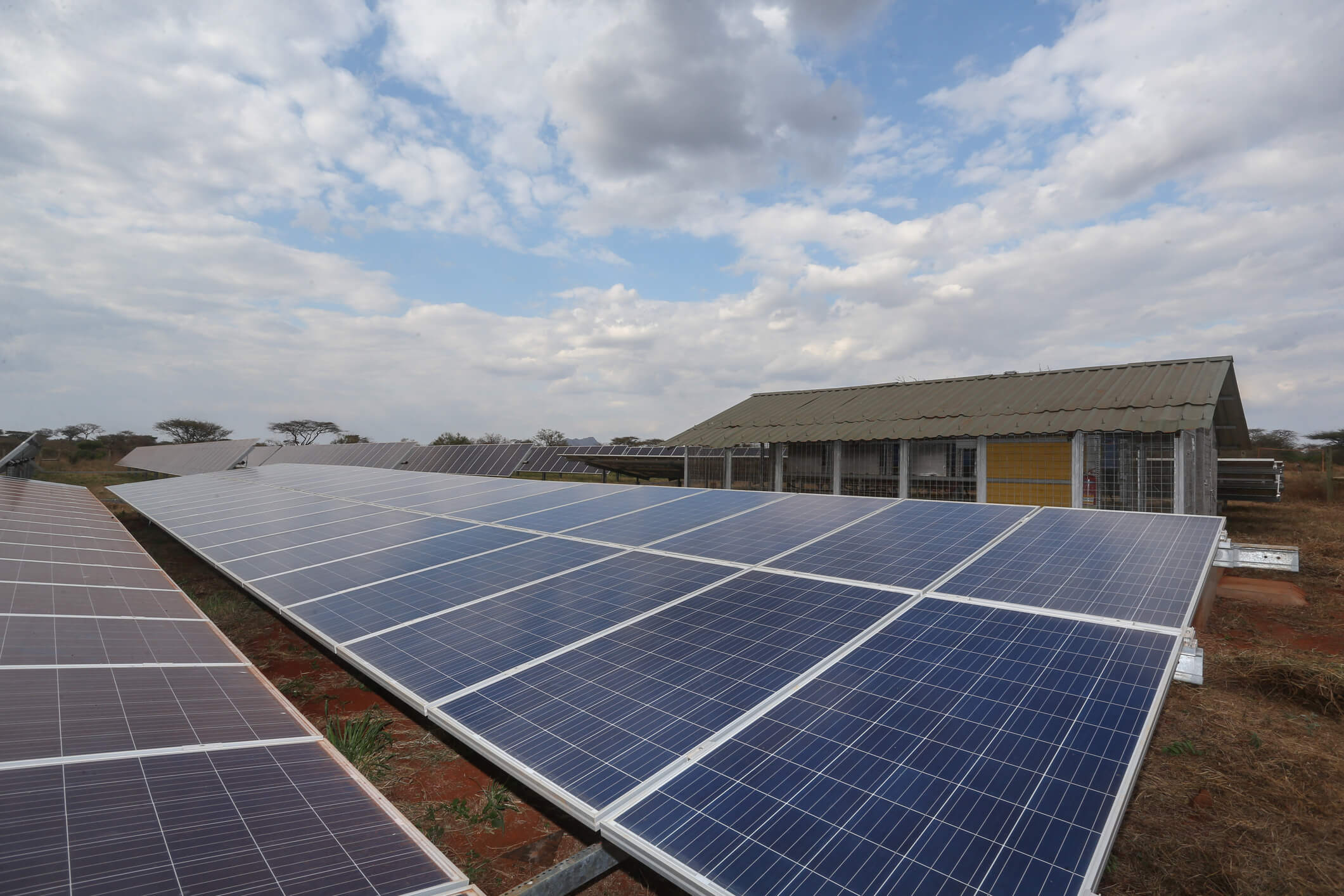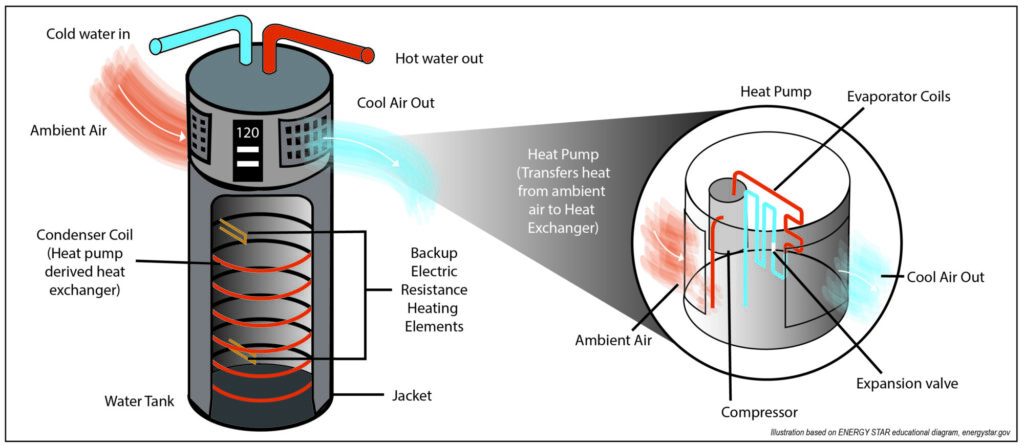United States
This technology offers new ways to provide residential customers with energy savings, cost savings, and a more resilient grid.
TRC is working with Entergy Texas on a Grid-Enabled Heat Pump Water Heater Pilot Program, an innovative measure that offers multiple benefits to both customers and the utility: energy efficiency, voltage regulation, load shifting, and peak-demand load shedding.
Energy Texas provides electricity to more than 430,000 customers in Southeast Texas. Since 2019, TRC’s Advanced Energy team has implemented residential energy efficiency and demand reduction programs to help the utility reach its objectives. A key component to our work for the utility is a new construction program which offers incentives directly to home builders to encourage the development of highly efficient, above-code new homes.
As part of this residential new construction program, TRC worked with Entergy Texas to develop a pilot program to further capture energy savings in the residential market through heat pump water heater (HPWH) technology. Compared to traditional electric water heaters, HPWHs are two to four times as energy efficient, and represent significant energy savings potential when used in housing stock in place of traditional water heaters.
Heat Pump Water Heater Technology
Heat pump water heaters (HPWH) work much like a refrigerator in reverse. The heat pump extracts the heat from surrounding warm air, intensifies the heat with a compressor, delivers the heat to the water, and exhausts the cooler air. Because it uses warm ambient air temperature to do most of the work, it is a very efficient way to heat water, using less than half the energy of standard electric water heaters. During periods of high hot water demand, HPWHs switch to standard electric resistance heat — which is why they are often referred to as “hybrid” hot water heaters. HPWHs also have programmable settings; “economy” mode which uses only the heat pump setting, and “vacation” mode which shuts down the heater for a set amount of time. (Source: EnergyStar.gov)
Heat pump water heaters are not only energy efficient, but they are designed to be grid-enabled, allowing for installation in utility demand management programs. As a result, this technology delivers multiple benefits to the customer and utility:
- Energy efficiency (kWh savings): energy usage reduced in comparison to less efficient technology
- Grid resilience: HPWHs are capable of storing thermal energy and reducing strain on the grid during peak electricity demand, including the critical Winter Peak in Texas
- Demand response (kW savings): this recurring benefit comes from Demand Response and/or Load Shifting actions. When combined with software capable of deploying event actions, a connected HPWH can provide the grid with load management or emergency response services. Further, grid-level deployment can happen at the grid operator level (e.g. ERCOT) or at the utility level (e.g. Oncor).
Demand actions can be accomplished using one or more methodologies, including pre-heating water and using mixing valves, adjusting set points, preventing the use of electric resistance heating elements in HPWHs, or interrupting power to all heating elements. Demand reduction analysis from HPWH is an emerging field of research, with few completed studies. Part of the goal of the TRC and Entergy Texas HPWH Pilot Program is to demonstrate, record and analyze the technology’s peak demand reduction capabilities in real-world applications, including:
- The HPWH pilot program hopes to show that Winter Peak demand savings will be significant – and as shown by the Texas grid disruptions during Winter Storm Uri of February 2021, this benefit is critical to the local grid. HPWH technology relies on an electric resistance heating element to provide back-up heat when temperatures are less than ideal for operation in heat-pump mode.
- A pilot rollout of Heat Pump Water Heater technology will also be a way apply thermal energy storage as a vehicle for distributed energy resources, such as functioning as part of a virtual power plant. HPWH technology will also be tested as a resource for ancillary services like voltage regulation.
TRC and Entergy Texas are conducting the pilot program with participation from industry partners including homebuilders, technology manufacturers, and grid management software providers. As we achieve results from the demonstration project, we will share these results with the industry and evaluate the potential for heat pump water heaters as a scalable resource for grid resilience, energy efficiency, and Integrated Demand Side Management (IDSM).
“We’re excited to participate in this pilot study, because heat pump water heater technology will provide Entergy Texas with new ways to provide our customers with energy savings, cost savings, and a more resilient grid.”
– Mark Delavan, Program Manager, Entergy Texas
Related Projects
Discover the success we’ve had with helping our clients execute major projects and make a meaningful impact on their local communities.

Promoting Clean Heat Technology in the Residential Sector
TRC is supporting utilities with long-term planning for school and municipal bus electrification.

Electric Buses: Paving the Way Forward
TRC is supporting utilities with long-term planning for school and municipal bus electrification.

TRC Accepted as NASA Satellite Data Early Adopter
The NASA-ISRO SAR (NISAR) Mission, an earth-observing satellite program launching soon, has accepted TRC as an Early Adopter to make …

NYSERDA Multifamily Energy Performance Portfolio
TRC delivered design, procurement, and construction services for 38 miles of transmission lines, two substation expansions, and equipment upgrades at …

Youth Services Hotel: LED Lighting Retrofit
As the implementer of PG&E’s Energy Savings Assistance Common Area Measures (ESA CAM) program, TRC helped deliver a LED lighting …

PG&E Remote Grid Initiative
TRC is partnering with PG&E to replace distribution lines with microgrids, which can serve remote customers while reducing wildfire risk …
Sharing Our Perspectives
Our practitioners share their insights and perspectives on the trends and challenges shaping the market.
Plan, Do, Check, Act: The Importance of Program Evaluation for Energy Efficiency Programs
July 14, 2025
We’re excited to share Episode 8 of TRC’s Energy Talks Podcast, where we’re joined by experts from NEEA and Consumers Energy to explore the vital role of program evaluation in advancing energy efficiency and market transformation.

TRC Earns U.S. Department of Energy (DOE) Qualification to be a Provider of Industrial Assessment Centers (IAC) Equivalent Energy Assessments
September 24, 2024
TRC can now provide IAC equivalent energy audits to small and medium-sized manufacturing (SMM) firms, who can receive grants of up to $300,000 for implementation of audit recommendations.

Utility Carbon Data Management
May 27, 2024
We’re pleased to announce Episode 7 of TRC’s Energy Talks Podcast, where we join experts from utilities and carbon accounting solution providers to discuss how our industry is understanding, measuring, and working to improve our collective carbon footprint.

Empowering Stakeholders to Co-Create Solutions that Address Inequity
April 23, 2024
Addressing inequality and ensuring that the benefits of the clean energy transition are accessible to all requires close examination of long-relied-upon processes that may have hidden inequities ingrained within them.

Monetizing the Environmental Attributes of Building Decarbonization Programs
March 27, 2024
Tune in to Episode 6 of TRC’s Energy Talks Podcast, where we join industry experts from the wholesale energy and environmental commodity markets to discuss how utilities and project developers are valuing the environmental attributes of building decarbonization projects.

Hydrogen Hub Funding Provisions
March 26, 2024
TRC’s panel of practitioners discuss the Hydrogen Hub (H2Hub) funding provisions of the Bipartisan Infrastructure Bill (BIL).

TRC Companies, Inc. selected to participate in Department of Energy (DOE) Multi-State Clean Hydrogen Hub
October 13, 2023
TRC received an award for advancing the transition to a clean-hydrogen, low-carbon economy by supporting the Appalachian Regional Clean Hydrogen Hub (ARCH2) consortium.

Download Whitepaper: 10 Years of Insights for Clean Community Microgrids
March 1, 2023
Clean, community microgrids represent a promising and timely opportunity for you to advance your customer offering and deliver meaningful societal benefits, all while modernizing your grid and providing you with load flexibility.

Start Your Batteries: Mass Fleet Electrification is Coming (And What We Can do to Prepare)
April 13, 2022
As we plan for and make early investments for fleets, we’ll be paving the way for higher degrees of market penetration of passenger vehicles and other modes of transportation as well.

Ensuring a Just Transition: Optimizing Opportunities for All in the Low-Carbon Future
January 24, 2022
Carbon elimination of the magnitude needed to address climate change requires systems-level change that can only be reached by incremental, ground-up progress, building upon what we have achieved thus far.

Decarbonization: A Systems-Level Challenge and Actions to Address Climate Change
December 7, 2021
Carbon elimination of the magnitude needed to address climate change requires systems-level change that can only be reached by incremental, ground-up progress, building upon what we have achieved thus far.

10 Takeaways from the COP26 Climate Meeting
November 17, 2021
There are compelling reasons to be optimistic about the outcomes of the COP26 meeting. Notably, agreement among all nations that more needs to be done, by both private and governmental bodies, to contain and mitigate climate change.

The Price of Natural Gas: Onward and Upward or Just a Temporary Blip?
November 12, 2021
Most industry experts agree that weather aside, the global energy and gas markets are likely to remain uncertain with supply and market demand becoming tighter and more challenging to forecast.

On the Road to Decarbonization: The Role of All-Source Competitive Solicitations
October 14, 2021
All-Source Competitive Solicitations offer utilities an alternative to centralized planning, construction and dispatch of power supplies, helping to usher in a new era of market-driven technology innovation.

Pacific Gas and Electric Selects TRC as Program Implementer for New Construction Residential All-Electric and Mixed Fuel Programs
September 27, 2021
Pacific Gas and Electric Company (PG&E) formally announced TRC as the designated lead Program Implementer for the Statewide New Construction (SWNC) Residential All-Electric and Mixed Fuel Programs following a competitive solicitation process.

TRC and Slipstream partner with the Minnesota Department of Commerce to launch energy conservation R&D project
June 24, 2021
TRC, Slipstream, and the University of Minnesota are working with controls system manufacturers and contractors to develop such a standardized and streamlined building control retrofit process leveraging ASHRAE Guideline 36

TRC Companies Inc. Acquires EMI Consulting
January 27, 2021
Today TRC Companies (“TRC”), announces the expansion of its advanced energy capabilities with the acquisition of EMI Consulting (“EMI”), a Seattle based firm that consults on the strategic development of clean energy solutions including energy efficiency, demand management, decarbonization and customer engagement.

City of Camarillo, California approves moving forward with Hybrid Solar Microgrids at five critical community facilities
November 6, 2020
On October 28, the Camarillo City Council unanimously approved moving forward with the design of Hybrid Microgrids at five City facilities: City Hall, the Corporation Yard, Camarillo Public Library, Police Station, and Wastewater Treatment Plant. The microgrid at the Camarillo Public Library will be designed with solar+storage only, while the other four sites will employ a hybrid design of solar+storage+diesel.

TRC Digital partners with Dominion Energy to evolve its distributed energy resource strategy
September 22, 2020
Dominion Energy, one of the nation’s largest producers and transporters of energy, has partnered with TRC Digital to evaluate, implement and integrate technology to further the utility’s distributed energy goals. TRC Digital will facilitate Dominion Energy’s strategy development and technology execution, allowing Dominion Energy and its customers to accelerate the shift to distributed energy resources (DER) and net carbon reduction.

Strategic Electrification
February 4, 2020
As we look to spur strategic electrification across the US, it will be up energy providers and solution implementers to continue sharing ideas, insights and lessons learned

A place called home: Helping California families rebuild after wildfires
November 21, 2019
A place called home: Helping California families rebuild after wildfires

TRC and partners win $1 million grant for engineering innovative New York microgrid
April 20, 2017
TRC is proud to support Huntington, NY bolster power reliability and climate-change resiliency with a sophisticated new “community microgrid’’ combining solar energy, a fuel cell, biogas and traditional natural gas to deliver electricity and heat to local customers and institutions.





























